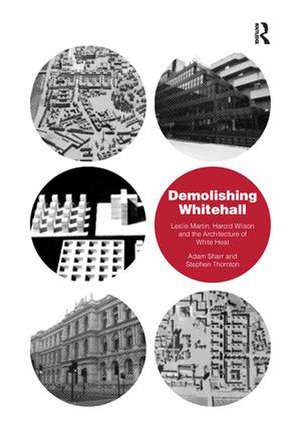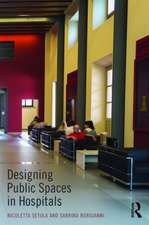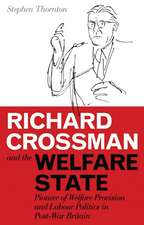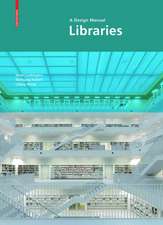Demolishing Whitehall: Leslie Martin, Harold Wilson and the Architecture of White Heat
Autor Adam Sharr, Stephen Thorntonen Limba Engleză Paperback – 16 noi 2016
| Toate formatele și edițiile | Preț | Express |
|---|---|---|
| Paperback (1) | 469.34 lei 6-8 săpt. | |
| Taylor & Francis – 16 noi 2016 | 469.34 lei 6-8 săpt. | |
| Hardback (1) | 1064.04 lei 6-8 săpt. | |
| Taylor & Francis – 18 oct 2013 | 1064.04 lei 6-8 săpt. |
Preț: 469.34 lei
Nou
Puncte Express: 704
Preț estimativ în valută:
89.81€ • 93.77$ • 74.33£
89.81€ • 93.77$ • 74.33£
Carte tipărită la comandă
Livrare economică 05-19 aprilie
Preluare comenzi: 021 569.72.76
Specificații
ISBN-13: 9781138277175
ISBN-10: 1138277177
Pagini: 328
Dimensiuni: 174 x 246 x 24 mm
Greutate: 0.45 kg
Ediția:1
Editura: Taylor & Francis
Colecția Routledge
Locul publicării:Oxford, United Kingdom
ISBN-10: 1138277177
Pagini: 328
Dimensiuni: 174 x 246 x 24 mm
Greutate: 0.45 kg
Ediția:1
Editura: Taylor & Francis
Colecția Routledge
Locul publicării:Oxford, United Kingdom
Cuprins
Contents: Introduction; A hope of better times and more spacious days; Components of a plan; Leslie Martin and the science of architectural form; Lost in a vortex; Conclusion; Bibliography; Index.
Recenzii
’This is a highly original book. It explores a forgotten moment in Britain’s post war history, one in which the country briefly embraced modernity without qualification. The authors use the plan to transform Whitehall’s architecture to ask who were Britain’s true modernisers and, in answering the question, they make a striking contribution to our understanding of Britain’s political and cultural history.’ Steven Fielding, Centre for British Politics, University of Nottingham, UK ’Briefly, in the 1960s, things were very different. Forged in the white heat of technological innovation, a grand project proposed the demolition and rebuilding of most of Whitehall. The work of Leslie Martin, it aimed not only to re-shape the physical heart of government, but also to re-cast the foundations of architecture on a scientific theory of form. Sharr and Thornton’s re-telling of this largely forgotten story is fascinating in detail and gripping in its narrative sweep.’ Richard Weston, Cardiff University, UK 'What an amazing saga. Officially commissioned early in 1964 to produce what would now be described as a ’masterplan’ for the government quarter, the Whitehall area of London. ...The story deserves to be known and is well told by Adam Sharr and Stephen Thornton.' Architectural Review 'What might have been a dry, academic investigation into a government planning exercise is instead imbued with wit, charm and novel insight.' Architecture Today 'The authors skilfully locate the scheme within its intellectual, architectural and cultural contexts'. Twentieth Century Society journal 'Chapters begin with clear introductions and the conclusions/summaries are highly instructive ... It makes a very useful wider contribution to several disciplines: certainly it should prove highly relevant to those working in the discipline of post-war planning and architecture, but it also helps to develop our broader understanding of modern culture in mid-twentieth
Notă biografică
Adam Sharr is Professor of Architecture at the School of Architecture, Planning and Landscape at Newcastle University, UK and editor of the journal Architectural Research Quarterly. Stephen Thornton is Senior Lecturer in Politics at the School of European Languages, Translation and Politics at Cardiff University, UK.
Descriere
This book is about a lost world - albeit one less than 50 years old. In the era of Harold Wilson's 'white heat', architect Sir Leslie Martin proposed a grand plan to demolish and rebuild a swathe of historic Whitehall, London's government district. At once optimistic and paternalistic, it simultaneously reinforced and challenged a rigidly hierarchical social order at the scales of building, city and nation. This project was never realized, but nevertheless, the plans and the political history surrounding them offer unique insights into Wilson's government, Wilson's Britain and Martin's distinctive scientific model of architecture, and more broadly into the connections between architecture, politics and society.













